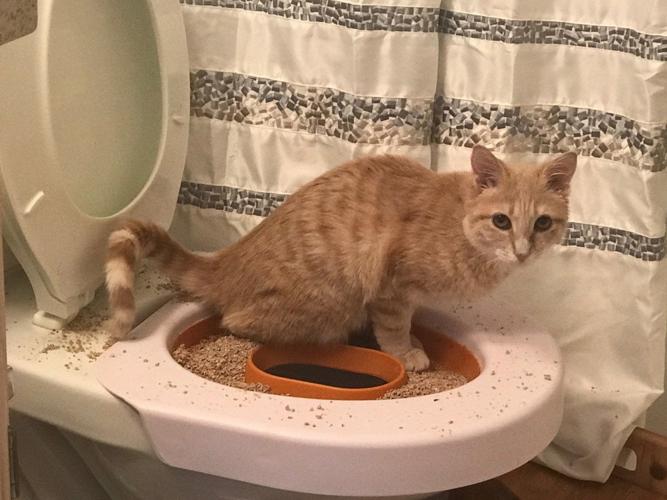Potential Issues of Flushing Cat Poop Down Your Toilet - Protect Your Plumbing
Potential Issues of Flushing Cat Poop Down Your Toilet - Protect Your Plumbing
Blog Article
We have noticed the article about Can You Flush Cat Poo or Litter Down the Toilet? down the page on the net and think it made perfect sense to write about it with you on this page.

Introduction
As feline owners, it's important to be mindful of exactly how we throw away our feline good friends' waste. While it might seem hassle-free to purge pet cat poop down the toilet, this method can have harmful consequences for both the setting and human health.
Alternatives to Flushing
Luckily, there are more secure and a lot more responsible means to deal with cat poop. Think about the adhering to choices:
1. Scoop and Dispose in Trash
The most common approach of throwing away pet cat poop is to scoop it right into an eco-friendly bag and throw it in the garbage. Make certain to make use of a committed litter scoop and get rid of the waste quickly.
2. Use Biodegradable Litter
Go with naturally degradable cat trash made from products such as corn or wheat. These litters are eco-friendly and can be safely dealt with in the trash.
3. Hide in the Yard
If you have a backyard, take into consideration hiding pet cat waste in a designated area far from veggie yards and water sources. Make sure to dig deep enough to prevent contamination of groundwater.
4. Set Up a Pet Waste Disposal System
Purchase a family pet waste disposal system specifically designed for feline waste. These systems use enzymes to break down the waste, minimizing smell and environmental influence.
Health and wellness Risks
Along with environmental concerns, purging feline waste can also present health and wellness risks to people. Cat feces might contain Toxoplasma gondii, a parasite that can create toxoplasmosis-- a potentially extreme disease, specifically for expectant ladies and people with damaged body immune systems.
Environmental Impact
Purging pet cat poop presents damaging microorganisms and parasites into the water, posing a substantial risk to aquatic ecosystems. These contaminants can adversely affect marine life and compromise water quality.
Conclusion
Responsible family pet ownership extends past giving food and sanctuary-- it also involves correct waste management. By refraining from purging pet cat poop down the toilet and selecting alternative disposal methods, we can minimize our ecological footprint and protect human health and wellness.
Why Can’t I Flush Cat Poop?
It Spreads a Parasite
Cats are frequently infected with a parasite called toxoplasma gondii. The parasite causes an infection called toxoplasmosis. It is usually harmless to cats. The parasite only uses cat poop as a host for its eggs. Otherwise, the cat’s immune system usually keeps the infection at low enough levels to maintain its own health. But it does not stop the develop of eggs. These eggs are tiny and surprisingly tough. They may survive for a year before they begin to grow. But that’s the problem.
Our wastewater system is not designed to deal with toxoplasmosis eggs. Instead, most eggs will flush from your toilet into sewers and wastewater management plants. After the sewage is treated for many other harmful things in it, it is typically released into local rivers, lakes, or oceans. Here, the toxoplasmosis eggs can find new hosts, including starfish, crabs, otters, and many other wildlife. For many, this is a significant risk to their health. Toxoplasmosis can also end up infecting water sources that are important for agriculture, which means our deer, pigs, and sheep can get infected too.
Is There Risk to Humans?
There can be a risk to human life from flushing cat poop down the toilet. If you do so, the parasites from your cat’s poop can end up in shellfish, game animals, or livestock. If this meat is then served raw or undercooked, the people who eat it can get sick.
In fact, according to the CDC, 40 million people in the United States are infected with toxoplasma gondii. They get it from exposure to infected seafood, or from some kind of cat poop contamination, like drinking from a stream that is contaminated or touching anything that has come into contact with cat poop. That includes just cleaning a cat litter box.
Most people who get infected with these parasites will not develop any symptoms. However, for pregnant women or for those with compromised immune systems, the parasite can cause severe health problems.
How to Handle Cat Poop
The best way to handle cat poop is actually to clean the box more often. The eggs that the parasite sheds will not become active until one to five days after the cat poops. That means that if you clean daily, you’re much less likely to come into direct contact with infectious eggs.
That said, always dispose of cat poop in the garbage and not down the toilet. Wash your hands before and after you clean the litter box, and bring the bag of poop right outside to your garbage bins.
https://trenchlesssolutionsusa.com/why-cant-i-flush-cat-poop/

Hopefully you liked our piece on Don’t flush cat feces down the toilet. Thanks a lot for taking time to read through our content. Make sure you take the opportunity to promote this blog post if you enjoyed reading it. Thank you for your time. Visit us again soon.
Call Today Report this page